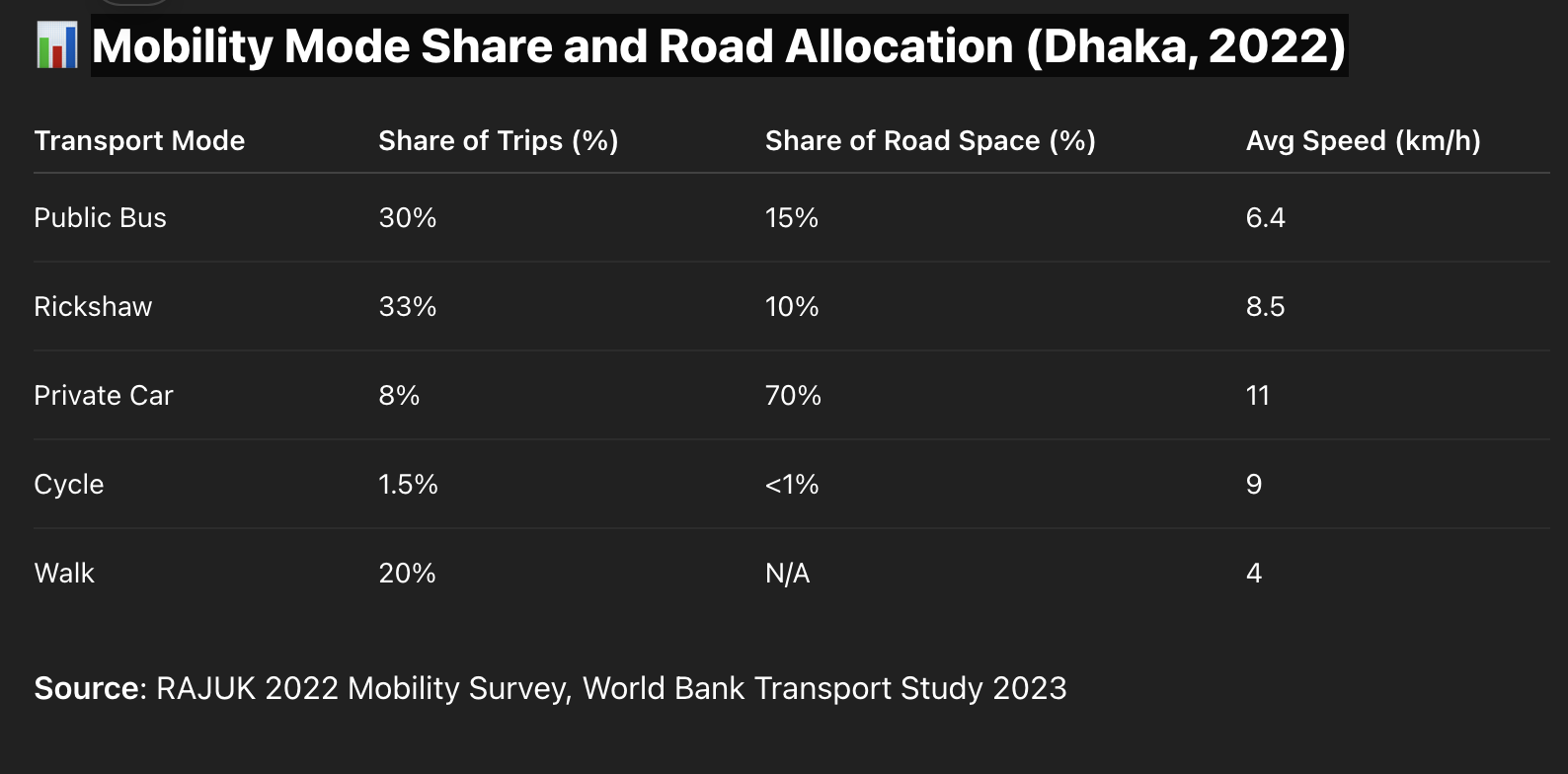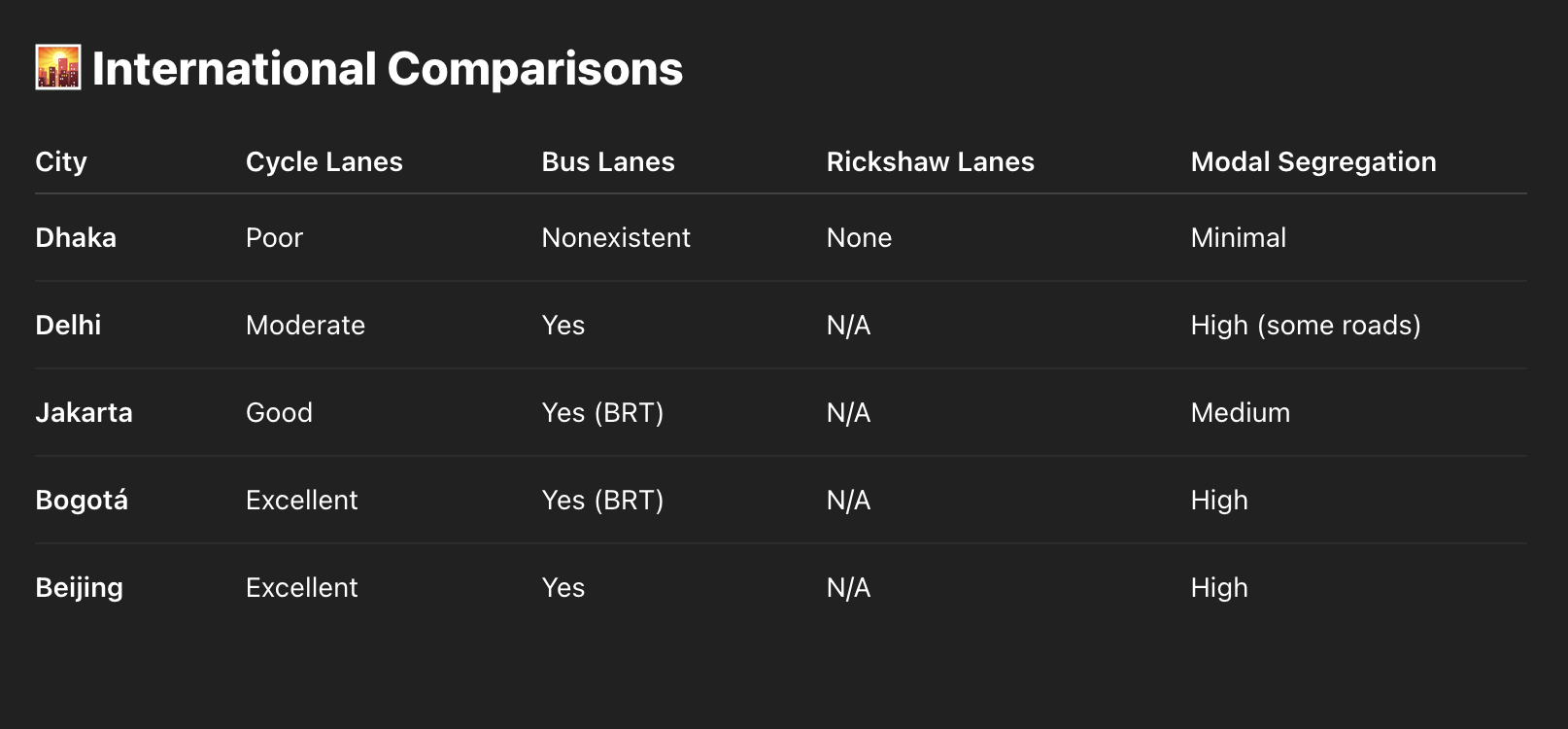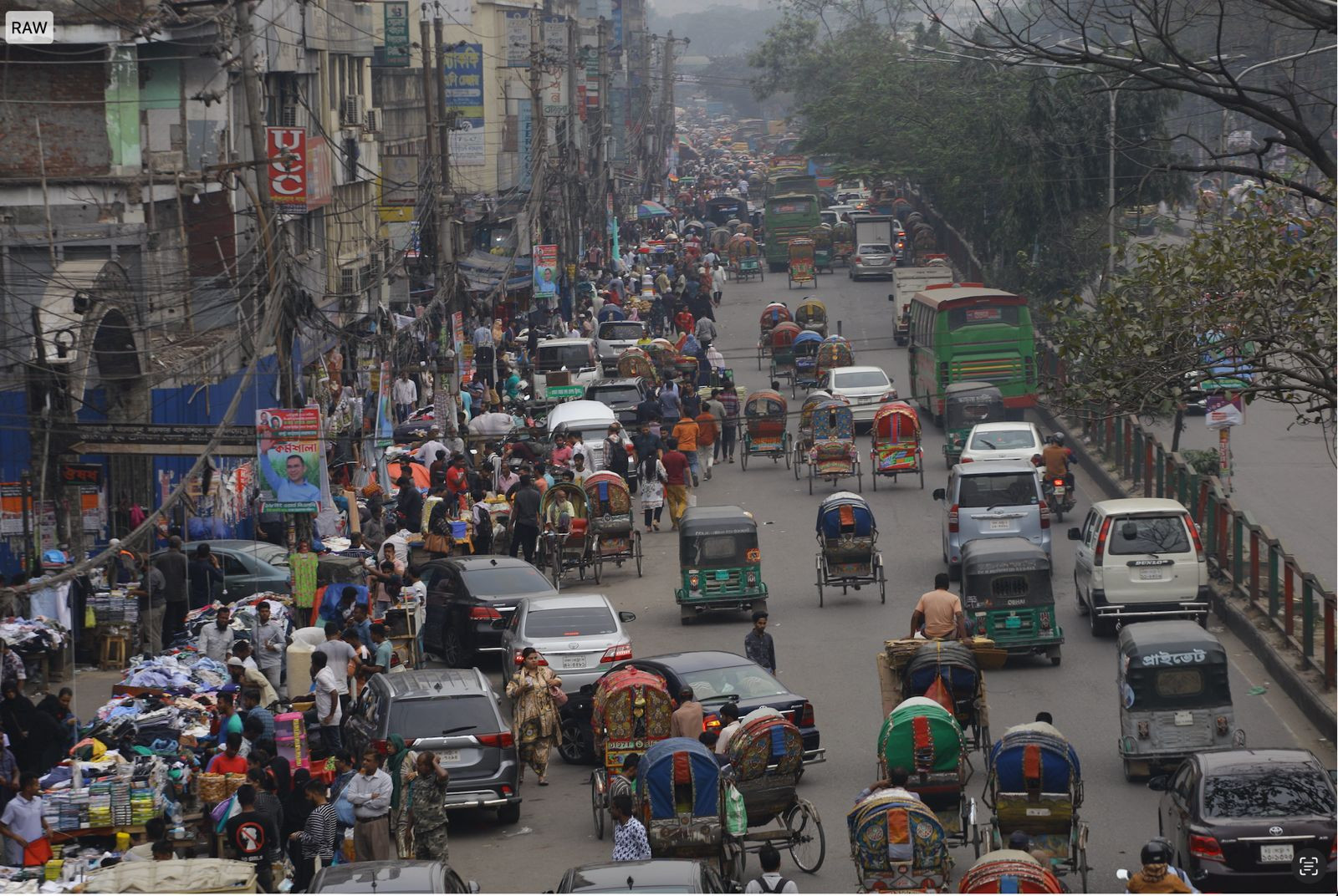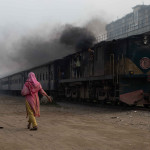Dedicated Lanes
Dedicated Lanes for Buses, Cars, Cycles, and Rickshaws in Bangladeshi Cities: A Mobility Equity Analysis
Overview
Bangladeshi cities, particularly Dhaka, Chattogram, and Gazipur, suffer from chronic traffic congestion, inefficient transport systems, and a lack of modal equity. Despite the coexistence of buses, private cars, rickshaws, and cycles, dedicated lanes for different modes of transport remain almost absent or ineffective, leading to chaotic road sharing, accidents, and long travel times.
This report explores the features, existing implementations, data-driven insights, and potential of dedicated lanes for improving urban mobility, safety, and environmental outcomes in Bangladesh.
Key Features of Dedicated Lanes (and Their Absence)
1. Bus Rapid Transit (BRT) & Bus Lanes
- Goal: Prioritize high-capacity public transport over cars.
- Current Status:
- Dhaka BRT (Gazipur-Airport corridor) under construction since 2012; plagued by delays and poor planning.
- No functioning exclusive bus lanes in central Dhaka or Chattogram.
- Impacts of Absence:
- Bus speed in Dhaka: 6.4 km/h (source: BRTA, 2023).
- Overcrowding, frequent accidents, and unreliable service.
2. Car-Centric Road Design
- Observation: Roads are designed to prioritize private vehicles, though they account for only 7–8% of commuters.
- Consequences:
- Private cars occupy over 70% of road space during peak hours (World Bank, 2021).
- Car lanes are informally prioritized, even without legal designation.
3. Cycle Lanes: Scarce and Unsafe
- Dhaka has virtually no protected cycling lanes.
- Pilot projects in Hatirjheel and Uttara Sector 7 (Dhaka North) were short-lived and disconnected.
- Barriers:
- Lack of road space allocation.
- Aggressive motorized traffic.
- Social stigma and absence of policy support.
Data: Cycling accounts for only 1.5% of modal share in Dhaka despite being affordable and eco-friendly (RAJUK, 2020).
4. Rickshaw Movement: Widespread but Marginalized
- Rickshaws make up over 30% of total trips in Dhaka city (BIDS, 2019), especially for trips <3 km.
- No dedicated rickshaw lanes on arterial or secondary roads.
- Often banned on major roads (e.g., Mirpur Road), forcing unsafe lane-sharing or sidewalk encroachment.
5. Lack of Modal Segregation and Traffic Discipline
- Mixed traffic on all major roads.
- Frequent lane violation, especially by motorcycles and buses.
- Absence of physical barriers or lane enforcement systems (e.g., bollards, paint striping, CCTV).


Critical Analysis
Urban Inequity in Road Design
Roads are disproportionately designed to serve the least efficient and least sustainable mode—private cars—while neglecting high-density modes like buses and rickshaws.
BRT and MRT Delay and Mismanagement
BRT construction (e.g., Gazipur-Airport) has faced:
- 10+ years of delay
- Cost overruns exceeding BDT 4,000 crore
- No integration with feeder networks (rickshaws, local buses)
Missed Opportunity for Green Mobility
Lack of dedicated lanes discourages:
- Cycling for work/school in Dhaka, which could be a viable solution for <5 km trips.
- Rickshaw integration in first-last mile connections for MRT, Metro Rail, or BRT.
Strategic Recommendations
Short-Term:
- Painted and Signposted Dedicated Bus Lanes on major roads (e.g., VIP Road, Sat Masjid, Airport Road).
- Pilot Protected Cycle Lanes in school/university zones (e.g., DU, BUET, North South).
- Rickshaw Corridors on local feeder roads with signage and bollards.
Medium-Term:
- Integrated Mobility Policy: Synchronize rickshaws, buses, and cycling as legitimate urban transport.
- Enforcement Technology: Use CCTV, AI cameras, and digital fines for lane violations.
- Multimodal Hubs: Link MRT, BRT, rickshaw and cycle stands at key nodes (e.g., Uttara North, Farmgate).
Long-Term:
- National Road Hierarchy and Lane Policy: Mandate modal segregation in road design codes.
- Urban Transport Authority (UMA): Unified regulation of transport, design, and enforcement.
- Design for Equity: Adopt a “Streets for All” philosophy in all urban road projects.
Conclusion
Without dedicated and protected lanes, Bangladesh’s cities will remain stuck in congestion, pollution, and transport inequality. Ensuring modal equity—by supporting high-volume, low-emission modes like buses, cycles, and rickshaws—is essential for achieving urban sustainability, public health, and climate resilience.


